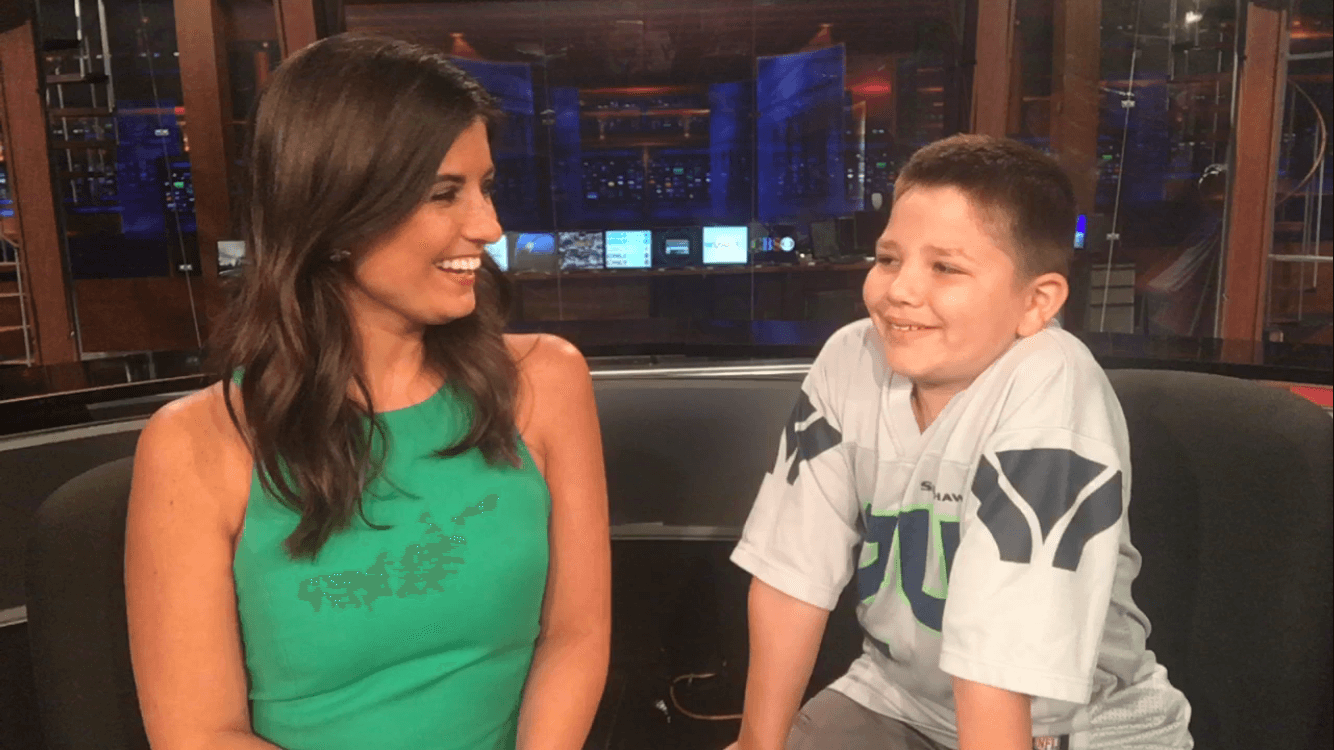Conor’s Story
Conor’s Story
Last year at my station, I talked about something very personal. I have Tourette Syndrome. Tourette’s is a neurological disorder. It’s characterized by involuntary movements or vocalizations called tics.
This is not something I’m ashamed of or something I try to hide, it’s just not something I lead with. But after a coworker of mine, Sam Martin, found out about my diagnosis, she encouraged me to do a story about it. I was hesitant at first because as a reporter, I’m not supposed to be involved in a story. It’s not about me- I am simply a bystander who observes and then reports. But this time, Sam convinced me this should be an exception. I’m glad she did.
After the story aired, a pretty awesome thing happened. I found a new friend named Conor.
Conor’s mother saw my story and sent me an email asking for advice, because her son also has TS. I responded and we chatted, then I told her Conor should stop by the station one time so we could talk.
Conor and I immediately clicked. He’s such an incredible kid, and if you watch the story you’ll see it, too.
Here’s the story about how we became friends, and how he inspired me. I hope he inspires you, too.
We all have something. Something that makes us unique. That little thing that sets us apart from everyone else. Sometimes it’s more obvious than others.
Conor Canonico’s quirk is Tourette Syndrome, or Tourette’s. It’s also Nikki’s.
Conor’s mom reached out to Nikki after a story she did about her diagnosis with Tourette Syndrome.
Conor was being bullied at school for his tics, and having a hard time explaining to his classmates why he did strange things.
“They would say, ‘Hey Conor, stop doing that you’re annoying,'” said Conor.
So Conor came to WUSA9 – and we made a video explaining our tics and what Tourette’s is and isn’t.
It’s hard to accept something you don’t understand – but how do you explain to a group of 10 year olds what a neurological disease is?
You bring a friend. So we decided to take our show on the road to Conor’s school in Dumfries, Va.
And we opened the floor to questions.
“Once I saw Conor come in our classroom for the first time and then I saw him sniff his fingers. I was like, ‘Conor, why are you sniffing your fingers?’ And he said it’s a disability,” stated one of Conor’s classmates.
We didn’t break down the chemical imbalance of the brain. Instead, focusing on something 10 and 11 year olds can understand. So we hit the ‘play’ button to allow our video to roll.
“And it doesn’t make us weird….Well, it does make us weird,” Nikki said. “But its okay to be weird right? It makes us different. Everyone has something. If you see us doing our tics, just know we are having a moment.”
“We are all weird,” said Conor.
“It’s cool to be weird,” said Nikki.
“I don’t want all of them to go away,” Conor said.
“Why not?,” asked Nikki.
“Because I think it makes me special,” said Conor.
Accepting the differences. Embracing the weird. That’s the first step to understanding.
Tourette’s can be a chronic condition lasting a life time. But for most people, according to the National Institutes of Health, the tics improve after the late teens or early adulthood. This was the case for Nikki–who learned how to control her tics with therapy and medication.



